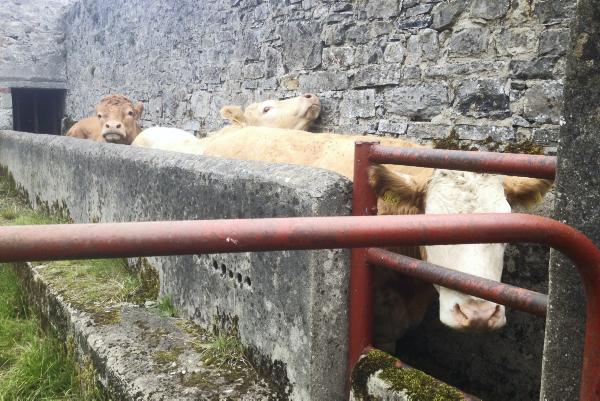It’s been a very busy week with the farm. The straw needed to bed the cattle is safely stored away in the shed for the coming winter albeit at a lower cost than last year, reflecting the reduction in income grain growers are facing.
We are very lucky in that we don’t have to travel too far to get our straw compared to farmers in other parts of the country. A local grower, a half mile away, supplies us with Spring Barley straw.
We continue to kill bullocks most weeks. Another seven were killed this week. After such a good year with grass and weather, it’s not reflecting on the kill sheet. The dead weights are only barely making out usual average and this is a common trend as I talk to other finishers and factory agents.
So what’s the cause?
Unusually I have no answer. They look as “fit” as any other year, but are not hanging up in the same fashion. Fluke can be ruled out, because the factory tests for fluke on each animal. I will continue to monitor the situation but as such my hands are tied.
Hereford
The biggest disappointment was a Hereford bullock, that stood out from the crowd all year as a “sweet animal”.
My ICBF print out informed me he was nearly a pedigree animal and had performed and looked really good all year. He killed R+ 3+ but only managed a mediocre 340 kilos deadweight. I wonder is this a common trend that these more traditional breeds don’t have the same kill out percentage as the more reliable continental animals?
We had an unusual case this week with a bullock that was starting to fail and looked very sick. The only visible symptoms were a swelling under his chin. All the symptoms pointed at timber tongue, an unusual illness that hasn’t been seen on this farm for more than 15 years. We treated him with 30 ml of Pen Strep for three days in a row and thankfully the swelling has gone and he is looking much brighter than before.
Flystrike
The sheep are also keeping us on our toes this week. The flystrike is becoming laborious at this stage, with no amounts of pour-on or dagging keeping it at bay. The unseasonal mild and humid weather seems to be fuelling the problem. Thankfully lambs continue to thrive, with another batch of lambs going this week. They were drafted between 46 and 50 kilos.






 This is a subscriber-only article
This is a subscriber-only article







SHARING OPTIONS: